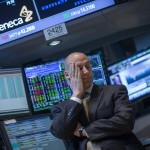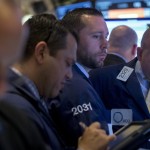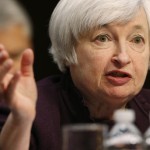No reason for these stock market jitters | Anatole Kaletsky – Reuters

“Sell in May and go away.”
This stock market adage has served investors well four years in a row. Every year since 2010, stock markets around the world have suffered significant corrections between a high reached in May and a low in the summer or early autumn: by 15 percent in 2010, 19 percent in 2011, 9 percent in 2012 and 5 percent in 2013, as gauged by the Standard & Poor’s 500.
Given that the Dow Jones Industrial Average hit its highest level ever on April 30, while the S&P 500 peaked less than 1 percent shy of its all-time record, it may seem sensible to follow the seasonal adage. Regardless of one’s views about the long-term prospects for the world economy.
That is precisely how financial markets have behaved since May 1. In the past week, investors around the world responded negatively to what have been, by any standards, extremely favorable economic figures from the United States, Britain and even Europe.
The most striking example of this perverse behavior was the reaction to U.S. employment figures, which often set the tone for investor sentiment around the world.
Not only did the April employment gain of 288,000 comfortably exceed Wall Street expectations, but upward revisions to three previous job reports strongly suggested that the U.S. economy’s slump around the new year, which caused a brief market panic in January, was just a weather-related aberration whose impact diminished steadily through the winter.
Better still, the good news on job growth was neatly counterbalanced by some softer figures in the payroll report on wages. This allowed Federal Reserve Board Chairwoman Janet Yellen to reassure the markets in her congressional testimony Wednesday that there is no prospect of early monetary tightening — despite the fall in unemployment to just 6.3 percent, the lowest level since Lehman Brothers went bankrupt in September 2008.
Despite all this good news, however, Wall Street closed down on Friday. More significantly, long-term interest rates, which generally move in the same direction as economic expectations, fell sharply, with the 30-year U.S. Treasury yield plunging to its lowest level since last June.
This bond-market action revealed that investors don’t believe the apparent improvement in the U.S. outlook or “smell a rat” somewhere else in the global economic scene. Where is this rat hiding?
For once, it is difficult to blame Europe. The most recent purchasing management figures from all over Europe, announced since last Friday, showed substantial and widespread improvements. Even Italy, Spain and Greece climbed well above the 50-mark that separates recession from recovery for the first time since 2011. Most emerging markets have also improved sharply in the past two months, after their bout of near-panic at the start of the year. Several countries that seemed most vulnerable — Turkey, Brazil and South Africa — performed best. Only in Japan, suffering from April’s tax hike, are economic conditions looking worse now than a few months ago.
What, then, could explain investors’ churlish response to good news — particularly the plunge in bond yields, which clearly suggests a slowdown of global growth instead of the acceleration implied by the news? There are two plausible explanations and one that is not.
First, many analysts think the bond market “knows” something negative about global economic prospects that statistics are not yet revealing. But this is unlikely. The record since at least 2000 shows that bond-market gyrations are a poor leading indicator of economic events. This is truer than ever because of stronger regulatory pressure on pension and insurance funds to match their liabilities with “safe” investments in government bonds, regardless of their dangerously low yields.
That leaves the two plausible explanations — geopolitical risks and high stock market valuations, compounded by seasonal expectations of a sell-off in May.
The geopolitical problems are obvious, but luckily seem to be waning for the reasons discussed here since the start of the Ukraine crisis. Russian President Vladimir Putin is close to achieving his main objectives: Western acceptance that Crimea will be part of Russia, and Ukrainian acceptance that their country will be ungovernable without Russian acquiescence. As he consolidates his winning position in this diplomatic chess game, Putin is clearly shifting from aggressive to conciliatory mode.
Assuming that the conflict in Ukraine subsides, the final question for investors is whether valuations, combined with the May factor, are a decisive reason for stock market caution in the weeks ahead. The answer is probably not.
Valuations on Wall Street are still well within historic ranges, as Yellen pointed out on Wednesday, while stock markets elsewhere are generally cheaper than in the United States. Such valuations would only be dangerously unsustainable if interest rates were rising or if global growth were slowing, instead of speeding up.
Indeed, looking back at the four “sell in May” corrections since 2010, all have been triggered by sudden scares about a U.S. growth slowdown. Once these growth panics subsided, the corrections sharply reversed. The big difference this year is that a U.S. growth scare has already happened, and all leading indicators suggest accelerating activity in the next few months.
In addition, equity market gains in the first four months of this year have been much smaller than in any year since 2009 — just 1.6 percent on the S&P 500. Meanwhile, bond markets (which tend to move in the opposite direction to equities) have done better than in any January-April period since 1988. The once-in-a generation divergence suggests that this could be an ideal time to rebalance portfolios by buying equities and selling bonds — the opposite of the strategy that has worked every May since 2010.
It may finally be time for stock-market investors to forget their seasonal habits and “Buy in May.”
PHOTO (TOP): A specialist trader works at a post that trades AstraZeneca on the floor of the New York Stock Exchange, April 28, 2014. REUTERS/Brendan McDermid
PHOTO (INSERT 1): Traders work on the floor of the New York Stock Exchange May 8, 2014. REUTERS/Brendan McDermid
PHOTO (INSERT 2) Federal Reserve Chair Janet Yellen testifies on the economy before the Joint Economic Committee on Capitol Hill in Washington, May 7, 2014. REUTERS/Jonathan Ernst
Read article here:
No reason for these stock market jitters | Anatole Kaletsky – Reuters
See which stocks are being affected by Social Media



